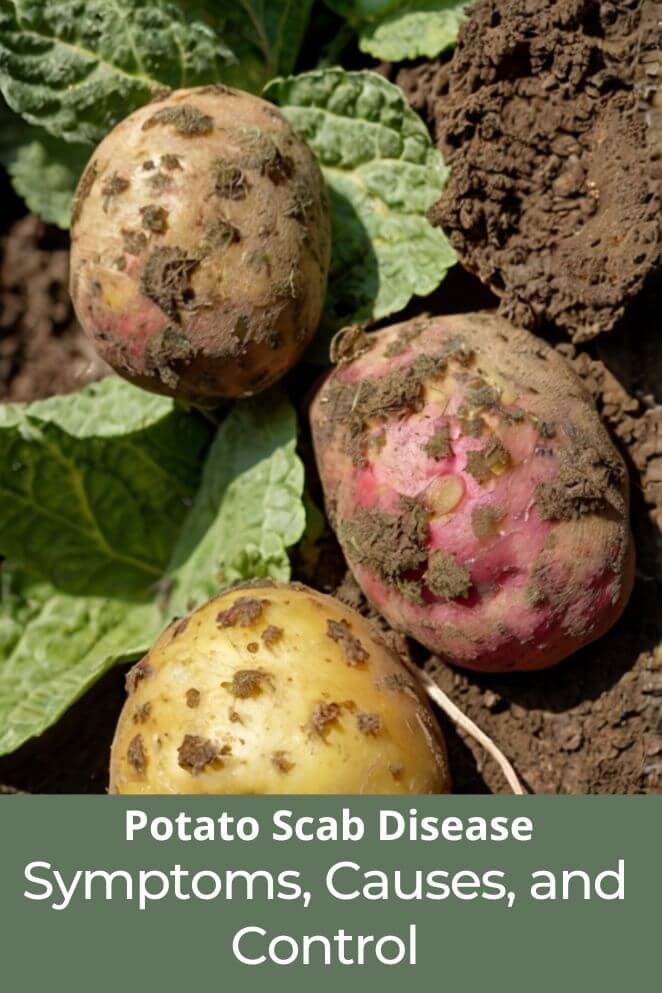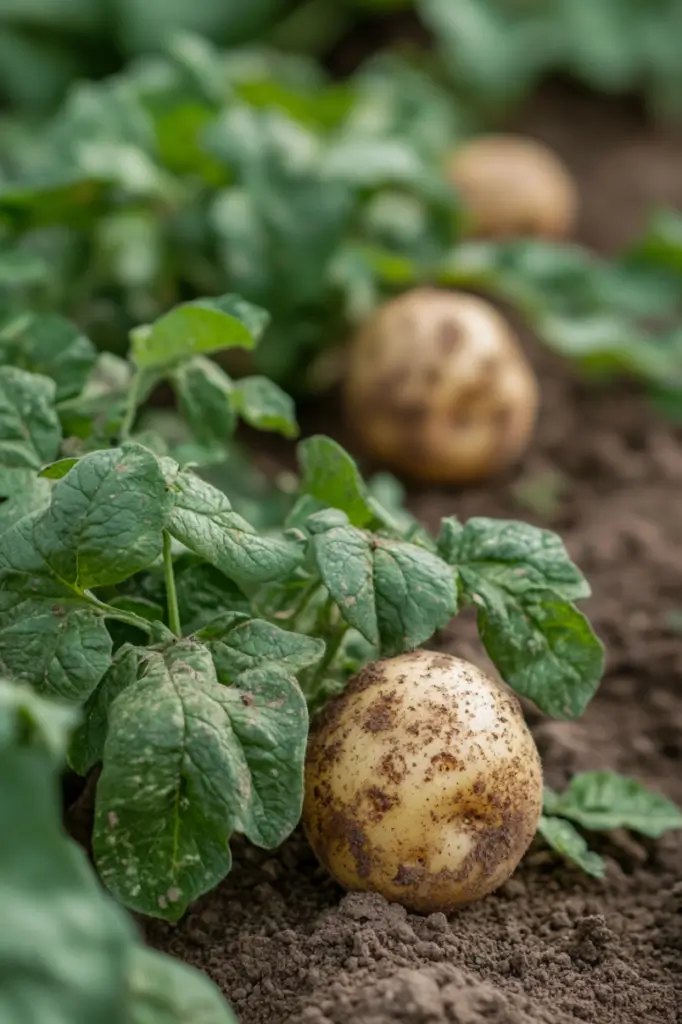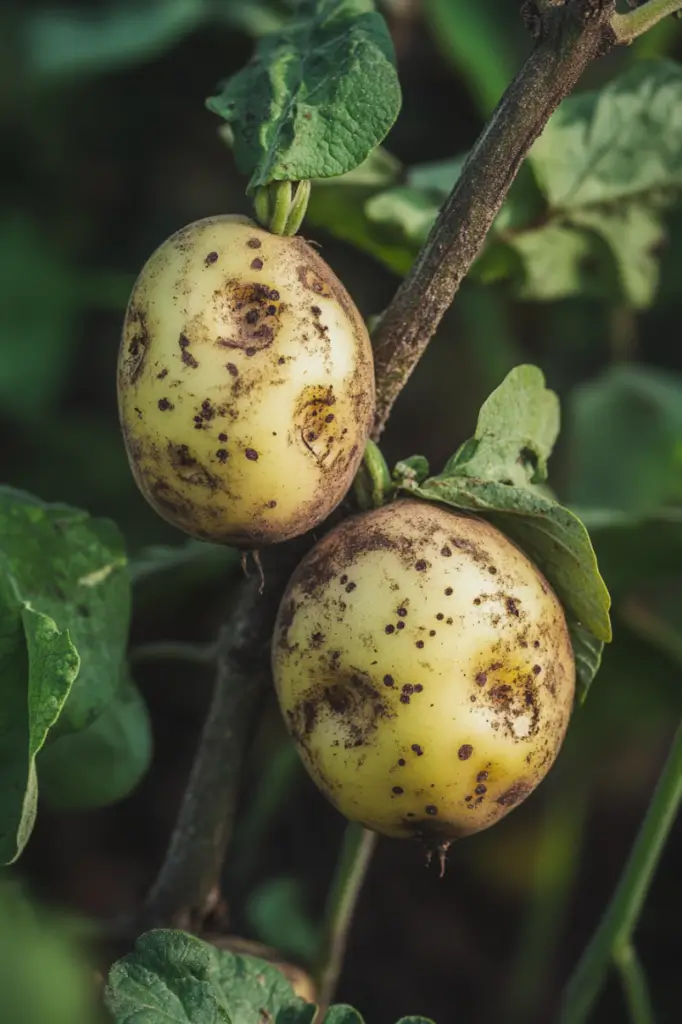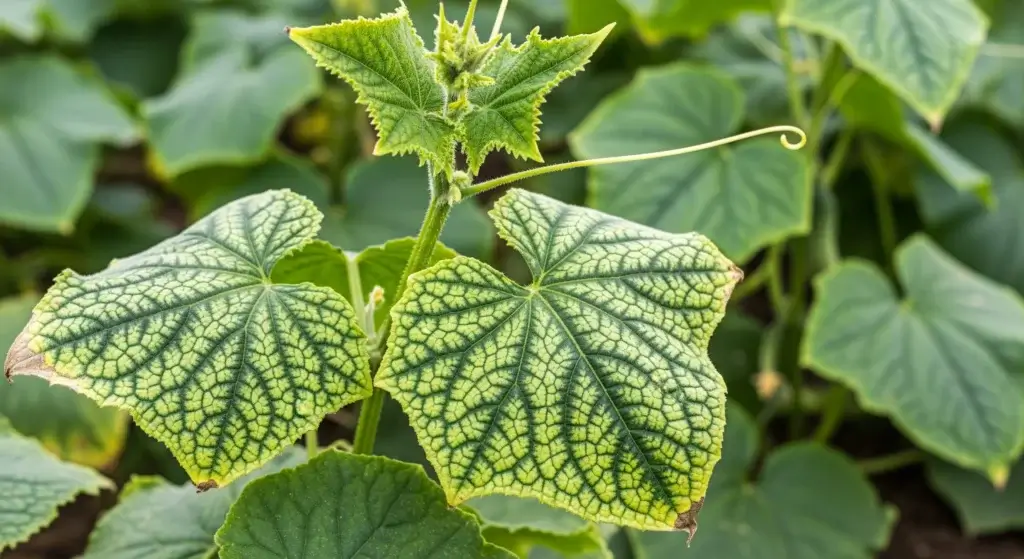
Potato scab disease is a significant concern for potato farmers and gardeners worldwide.
These diseases can lead to the formation of lesions on the tubers, reducing their quality and market value.
Understanding the causes, symptoms, and prevention methods of potato scab disease is crucial for maintaining healthy potato crops and ensuring a bountiful harvest.
In this article, we’ll take a close look at potato scab disease.
We’ll cover how to identify it, ways to manage it, and useful tips to help prevent it.
What is Potato Scab
Potato scab is a disease caused by a soil-dwelling bacterium called Streptomyces scabies.
This bacterium infects the tubers, which are the edible part of the potato plant, causing noticeable and unsightly blemishes on their surface.
Here’s a closer look about potato scab impact:
Appearance
Potato scab presents as rough, corky patches on the skin of the potatoes.
These patches can vary in size and color, often appearing as tan, brown, or dark brown lesions.
In severe cases, the lesions can become raised and warty, making the potatoes look unattractive.
- Read also: Effective Strategies on How to Prevent Potato Beetles
- Read also: The Ultimate Guide to Companion Plant for Luscious Potatoes
Quality on potatoes
While the scab affects the outer appearance of the potatoes, it doesn’t typically impact the internal quality.
The taste, texture, and nutritional value of the potatoes remain the same.
However, the scab does make the potatoes less appealing for sale and consumption without peeling, which can be a significant issue for commercial growers who rely on the visual quality of their produce.

Common Causes of Potato Scab
The main causes of potato scab disease are bacterium Streptomyces scabies.
Here’s a closer look at what you need to know about potato scab bacteria:
Characteristic of bacteria
Streptomyces scabies, bacteria responsible for potato scab, can survive in the soil for many years, even without a host plant.
This persistence makes it a challenging disease to manage.
The bacteria can also be spread through infected seed potatoes, contaminated soil, and equipment.
It can also be spread through wind, water, and fresh manure.
Favorable conditions
Potato scab thrives in specific soil conditions.
Soils with a high pH level (above 5.2) are particularly conducive to the growth of Streptomyces scabies.
Dry soil conditions during the tuber formation phase also promote the development of the disease.
Therefore, managing soil pH and moisture levels is crucial in controlling potato scab.
Host range
While potatoes are the primary host for Streptomyces scabies, the bacterium can also infect other root vegetables such as beets, radishes, and carrots.
This broader host range means that the bacteria can persist and spread through various crops, making crop rotation an important strategy in managing the disease.
Potato Varieties
When it comes to potato scab, not all potato varieties are created equal.
Some varieties are more prone to this disease, while others have developed natural resistance.
Understanding which varieties are susceptible and which are resistant can help you make better choices for your garden or farm.
Here’s a closer look at these varieties:
Susceptible varieties
Certain potato varieties are more likely to develop potato scab due to their genetic makeup.
Here are some common varieties that are known to be susceptible:
- Russet burbank: This is one of the most popular potato varieties, especially in North America, known for its large size and russeted skin.
- Kennebec: Kennebec potatoes are known for their smooth skin, white flesh, and versatility in cooking.
- Red pontiac: This variety is recognized by its red skin and white flesh. It is often used for boiling and in salads.
Resistant Varieties
Choosing potato varieties that are resistant to potato scab can be an effective strategy to manage the disease. Here are some varieties that have shown better resistance:
- Superior: Superior potatoes have smooth skin and white flesh. They are known for their uniform shape and size.
- Norland: Norland potatoes are early-maturing with red skin and white flesh. They are often used for new potatoes.
- Caribe: Caribe potatoes are recognized for their purple skin and white flesh. They are early-maturing and have a smooth texture.

Preventing Potato Scab
Prevention is always better than cure, especially when it comes to managing potato scab.
There are several effective strategies you can employ to minimize the risk of this disease affecting your potato crop.
Here’s a detailed guide on how to prevent potato scab:
Soil pH management
Maintaining the right soil pH is crucial for preventing potato scab.
The bacterium Streptomyces scabies thrives in alkaline soils (pH above 5.2).
Before planting, test your soil’s pH level.
Soil testing kits are widely available and easy to use.
If your soil is too alkaline, you can lower the pH by adding sulfur.
Sulfur gradually acidifies the soil, creating a less favorable environment for the bacteria.
Incorporate acidic organic matter like peat moss into your soil.
Peat moss not only helps lower the pH but also improves soil structure and moisture retention.
Consistent watering
Maintaining consistent soil moisture is essential, especially during the critical tuber formation stage.
Inconsistent watering can create conditions that favor the development of potato scab.
Here’s how to ensure consistent moisture levels:
- Regular watering: Water your potatoes regularly, aiming to keep the soil evenly moist. Avoid letting the soil dry out completely or become waterlogged.
- Mulching: Use mulch to help retain soil moisture. Mulching also helps regulate soil temperature and suppresses weed growth.
- Drip irrigation: Consider using drip irrigation systems. These systems deliver water directly to the plant roots, reducing evaporation and ensuring consistent moisture levels.

Use disease-free seed potatoes
Starting with healthy seed potatoes is one of the best ways to prevent introducing potato scab into your garden or farm.
Always use certified disease-free seed potatoes.
These seeds are inspected and guaranteed to be free from diseases.
Do not save tubers from an infected crop for planting the next season.
This practice can introduce the bacteria into your soil.
Crop rotation
Crop rotation is a powerful tool in preventing potato scab.
The bacteria that cause potato scab can survive in the soil for many years, so rotating your crops helps disrupt their life cycle.
Here’s how to practice crop rotation:
- Rotate crops: Avoid planting potatoes or related crops (such as tomatoes, peppers, and eggplants) in the same spot for at least three years.
- Diversify planting: Rotate with non-host crops like beans, corn, or grains. These crops do not support the growth of Streptomyces scabies, reducing the bacteria’s presence in the soil.
Incorporate organic matter
Adding organic matter to your soil can improve its structure and health, making it less favorable for the bacteria.
Add well-decomposed compost to your soil.
Compost enriches the soil with nutrients and improves its water-holding capacity.
Plant green manure crops such as clover or ryegrass.
These crops can be tilled back into the soil, adding organic matter and improving soil structure.
Choose Resistant Varieties
Opting for potato varieties that are resistant to potato scab is an effective preventive measure.
Resistant varieties are less likely to develop the disease, even if conditions are favorable for Streptomyces scabies.

- Read also: The Ultimate Foe: Common Potato Pests and How to Defeat Them
- Read also: Potato Watering Requirements: Keep Your Potatoes Healthy
Conclusion
Potato scab may be a common issue for potato growers, but with the right knowledge and practices, it can be effectively managed and prevented.
By understanding the cause of potato scab and implementing preventative measures, you can ensure a healthy and bountiful potato harvest.
These preventive tips will help you keep your potatoes free from scab and looking their best.
FAQs
Chemical treatments for potato scab are limited and not always effective. Focus on preventive measures such as using disease-free seed potatoes, practicing crop rotation, and maintaining proper soil pH.
When it comes to managing potato scab, no direct cure once tubers are infected, prevention is key.
Potato scab bacteria primarily affects tubers, but severe infections can cause plant stunting.



